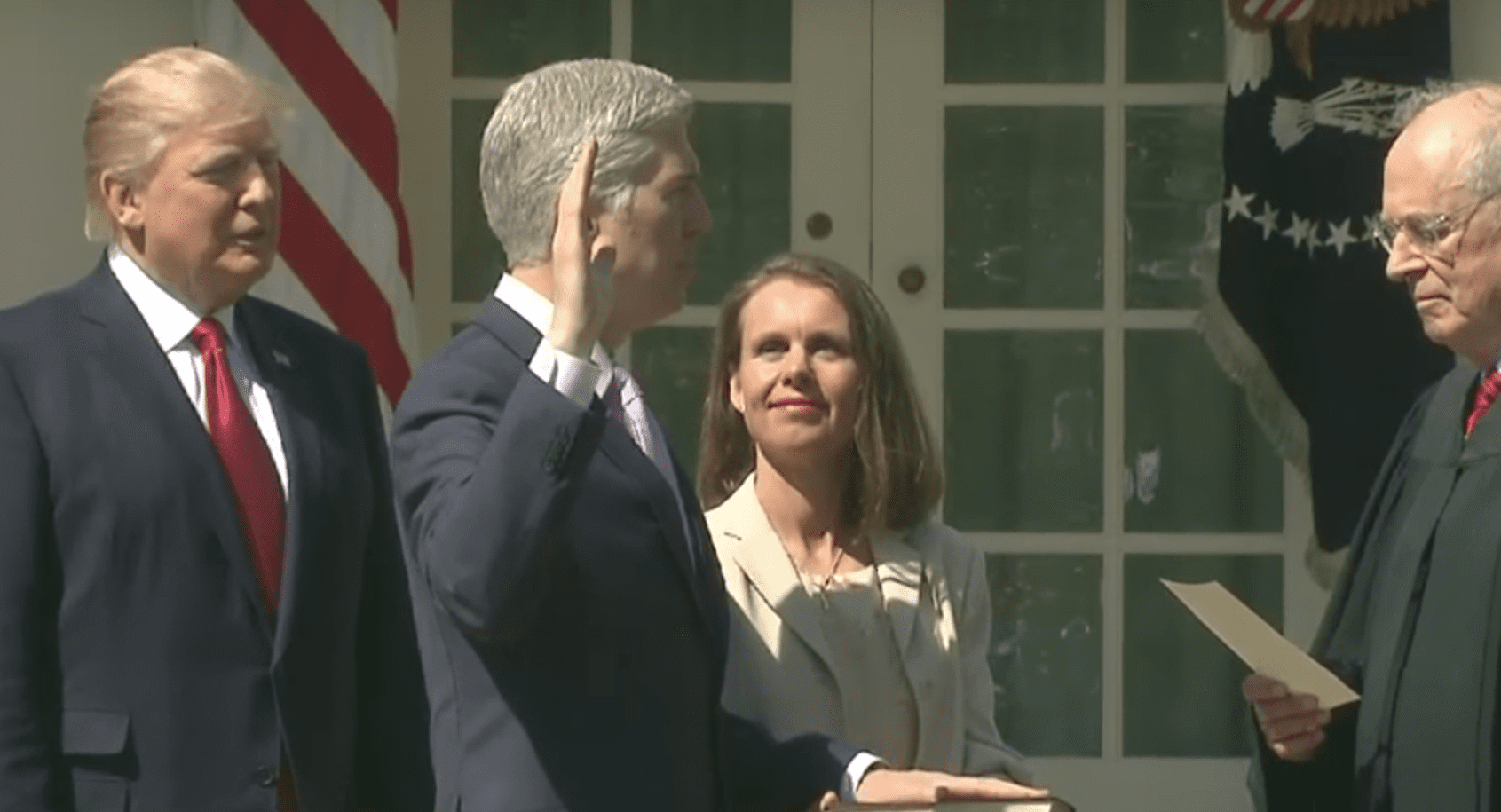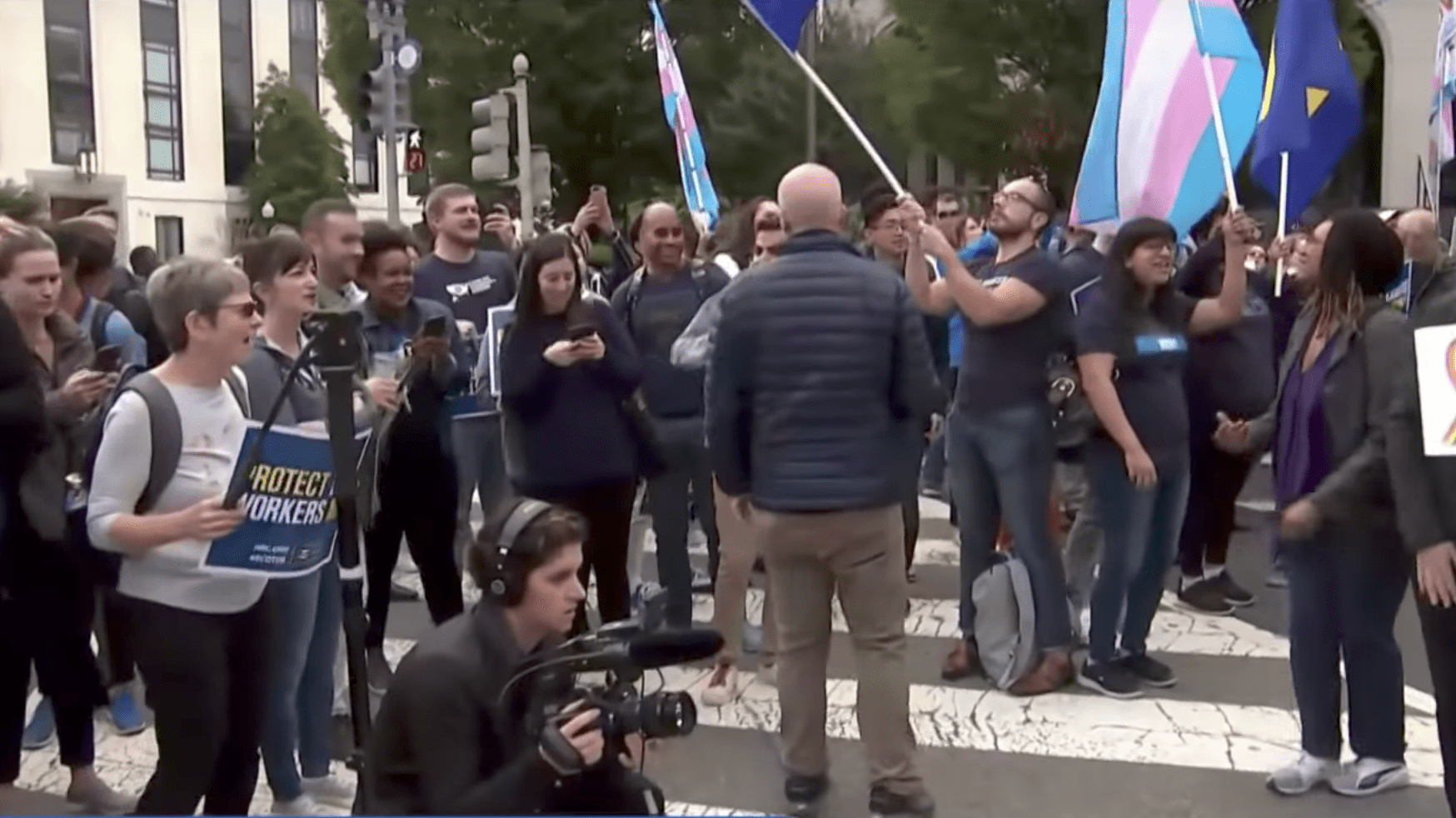
Earlier this month, the U.S. Supreme Court heard oral arguments in cases which will determine whether anti-workplace discrimination protections under Title VII of the Civil Rights Act cover LGBTQ+ Americans.
It’s a seminal moment in the fight for LGBTQ rights, one extensively covered by Instinct and other U.S.-based queer media in particular, all with a sense of urgency. Over coming months, I argue, we need to maintain that sense of urgency through not just analysis and reporting, but also activism and direct advocacy. Unfortunately, the balance of the Court is not favorable to LGBTQ Americans generally, and the questions and framing from the bench across
Background to the Cases
A little over a week after the October 8 arguments began, analyses have been split on whether to expect favorable rulings from the conservative-leaning Court – and we have awhile yet before that decision is rendered, with opinions expected sometime in mid-2020.
Out’s Matt Baume expertly summarized the cases and their stakes:
[T]he Supreme Court heard oral arguments in a trio of cases — Bostock v. Clayton County, Georgia; Altitude Express, Inc. v. Zarda; and R.G. & G.R. Harris Funeral Homes v. EEOC — that will decide if LGBTQ+ people are entitled to protection under Title VII of the Civil Rights Act of 1964. [The Act] forbids workplace discrimination on the basis of characteristics like race, national origin, religion, and sex.
The justices will essentially decide whether or not it’s legal to fire LGBTQ+ people under Title VII’s definition of sex-based discrimination.
As I explained back in July, the cases involve two LGBTQ people fired for their sexual orientation in separate instances (Gerald Lynn Bostock and the late Donald Zarda) along with a transgender woman fired for coming out at work (Aimee Stephens).
These cases also present potentially enormous implications. As of 2019, just 21 U.S. states (plus Washington, D.C.) protect LGBTQ Americans on the basis of sexual orientation and gender identity in both public and private workplaces under law. Several others protect sexual orientation or gender identity alone, or only offer protection for public employees, but not private ones.
A favorable ruling would extend protections for workers residing in 12 states currently lacking any protections from anti-LGBTQ discrimination in the workplace. An unfavorable one, though, could produce disastrous consequences nationwide.
The Hearings: A Careful, Clinical Pro-LGBTQ Case; Unclear Divisions on the Bench
A number of excellent articles and interviews have recapped the Supreme Court’s oral arguments from earlier this month. A few are highlighted here as exemplars of common trends in coverage:
- Katelyn Burns, for Vox, sharply—and brilliantly—articulated the frustrations among many trans Americans. There, Burns points out how several justices, to include liberal-beloved icons like Ruth Bader Ginsburg and Sonia Sotomayor, couldn’t stop “from bringing upthe most obsessed-over of all trans issues — bathrooms and who gets to use the ones labeled ‘women’ and who gets to use the ones labeled ‘men.’” (That the issue was brought up before Aimee Stephens’s case—the only one with a trans plaintiff—may have been strategically deliberate, with Justice Sotomayor hoping to take the sting out of a hot-button topic, but the subject of bathroom policies is almost entirely irrelevant in the cases at hand.)
I know today was stressful for all of us, but we won’t have a decision in this case until the Spring, at minimum. I hope we can all continue to live our best, most authentic lives in the meantime.
— Katelyn Burns (@transscribe) October 9, 2019
Burns also perceptively catalogues the long list of red flags appearing throughout the justices’ questions, but makes it all the more powerful by relating the experience of being trans while watching nine straight, cisgender people clumsily pontificate on LGBTQ rights.
- On the role of religion in the cases—the “elephant in the room,” per Justice Stephen Breyer—Rewire News’s Patrick Hornbeck provides a clear, thoughtful summary. Hornbeck also writes one of the best reviews of the plaintiff’s arguments, which also were covered well by the New York Review of Books just prior to arguments.
- For those not keen on reading tons more, there’s also Jessica Mason Pieklo’s interview with BuzzFeed News’s “AM2DM,” giving a solid, big-picture post-arguments rundown of what happened.
All Eyes on Justice Gorsuch
In October 8’s aftermath, attention quickly settled on Associate Justice Neil Gorsuch, President Donald Trump’s first U.S. Supreme Court pick back in April 2017, as the likeliest “swing voter” in the case.
Toward the end of a thorough justice-by-justice analysis for the Dallas Voice, Lisa Keen explained why Gorsuch might be the deciding figure on Title VII, labeling his likely vote “uncertain.” (The other eight justices predictably split along partisan–ideological lines, tying the vote 4–4.)
As Keen explained of Gorsuch, his performance
got the lion’s share of media attention because he made a couple of comments that suggested he is on the fence. His comments suggested that, while sexual orientation discrimination may have been in play when the employers fired the men for being gay, “Isn’t sex also in play here? And isn’t that enough?” for a Title VII violation, he asked.
Keen expressed a few common reservations about Gorsuch, such as how he “evaded answering questions about his positions on LGBT issues” during Senate confirmation hearings or that he had published an article calling “gay marriage” part of liberals’ “social agenda.”

At LGBTQ Nation, Katrina C. Rose reflected the slightly more-optimistic view in assessing the cases’ aftermath, writing
That optimism has been focused not on Chief Justice John Roberts, known for being something of a voice of moderation on a partisan court (think back to the Obamacare case in 2012), but on Justice Neil Gorsuch – the man who occupies the Merrick Garland Seat.
Some have viewed Gorsuch’s line of textualism-centric questioning as an indication that his vote might be in favor of trans woman Aimee Stephens.
It may be. Or it may not be.
All we know for sure is that it constituted one moment on one Tuesday in October.
If the end result is 4-1-4 in favor of Aimee Stephens with a narrow, positive interpretation of Title VII being the 1, I’ll cheer.
So, where will the justices ultimately fall? Unfortunately, I am even more skeptical than Keen’s “uncertain” view of Justice Gorsuch (though I agree fully with all other justices’ predicted likely positions).
Gorsuch: True Wildcard or Playing Coy?
Although Justice Gorsuch has crossed partisan lines in some cases over the years—for example, joining his four liberal colleagues in upholding the Washington State-based Yakama Tribe’s treaty rights—he has proved more-reliably conservative on social issues, including LGBTQ rights-related ones, for many years.
While one’s graduate research and associated mentors are not surefire indicators of one’s own views, Mr. Gorsuch’s doctoral advisor at Oxford University raises eyebrows among legal scholars.

John Finnis, a very conservative jurist whose work often focuses on the intersections of morality and law, published several papers in the late 1990s on the “moralities” of sexuality and marriage, predictably concluding that homosexuality and same-sex marriage were “immoral.” The two, for Finnis, are deeply linked “by the first principles of practical reason” in that sex is “immoral when [it is] ‘against the good of marriage,’” something inherently “unreasonable” and “unnatural.”
After writing in 1997 that “homosexual conduct is ‘never a valid, humanly acceptable choice and form of life’” (among other things), Finnis unleashed a vicious, personal attack on Seventh Circuit Judge Richard Posner – in 2014.
Specifically, Finnis wrote Posner’s opinion overturning two states’ bars on same-sex marriage “disgrace[d] the federal judiciary,” engaging in “fallacious rhetorical misrepresentation” without “a modicum of seriousness.” Posner’s opinion—like retired Justice Anthony Kennedy’s LGBTQ-favoring opinions for the U.S. Supreme Court—certainly can be critiqued as legally indeterminate, as far as constitutional doctrines go. Singling these out for such vitriol—and not, say, extending due process rights to private corporations—gives away Finnis’s game.
Still, one doesn’t have to draw inferences from Mr. Gorsuch’s advisor to his 2019-era self; it’s helpful context for understanding his early training and legal thinking, but Gorsuch’s judicial record independently raises some red flags.
As an originalist who prioritizes looking to the text of a law as it written and its meaning at the time, the use of “sex” in Title VII’s ‘60s-era vernacular does not inspire hope for Gorsuch becoming a liberal ally here. The social mores of the mid-1960s, after all, were not especially welcoming to LGBTQ people.
Reading more-expansive protections into a law is one credible approach, but it’s not one favored by originalists like the Supreme Court’s conservative justices, Gorsuch included.
Similarly unpromising are Mr. Gorsuch’s strong views on freedom of religion. The Atlantic’s Garrett Epps wrote over two years ago that Gorsuch’s views reflect personal certain religious convictions and specific conceptions of “conscience,” again typifying American Christian conservatism we’ve seen from the Court.
Thus, Gorusch’s support for various state and federal “religious freedom measures” could be—troublingly—directly relevant to the Title VII cases. Epps explains:
All of these “religious freedom measures” erect strong legal protections for one and only one set of religious beliefs: opposition to LGBT rights and marriage equality.
Holders of these beliefs would be protected against any adverse action for acting on them—that is, for example, allowed to hold federal or state contracts while firing LGBT employees or denying spousal benefits to same-sex couples.
It should be little surprise that Gorsuch’s other actions on the Supreme Court have echoed his predecessor’s, the late Antonin Scalia.
Last December, for example, Mr. Gorsuch joined Justice Clarence Thomas’s vigorous dissent opposing the Court’s majority, which had decided not to hear appeals from Louisiana and Kansas. Those two states sought permission to block funding for Planned Parenthood, even though the funding was not for abortion-related services – a routine Scalia-esque position.
What’s the Worst?
Mr. Gorsuch, a man once described as a longtime “favorite of legal thinkers at the Federalist Society and the Heritage Foundation,” on balance appears an unlikely ally in LGBTQ rights cases at best.

Hopefully that expectation is proved wrong sometime next year.
Even if it isn’t wrong, the level of alarm should be somewhat constrained: Getting a five-vote majority for a binding holding will be a challenge. Any result may tend toward the arcane—whether in favor or against expanded LGBTQ rights and protections—and on narrow grounds. Don’t expect a wholesale revocation of all employment-related rights even if the Court sides with discriminatory employers in these cases (and keep in mind Katrina C. Rose’s 4-1-4 favorable outcome as a possibility).
Regardless, maintaining constant organizing and advocacy remains paramount.
Loud public pressure campaigns demanding LGBTQ rights, including on issues like non-discrimination protections specifically, have moved in lockstep with widespread change in the past, after all.
(Sources: Out, Vox, Dallas Voice, LGBTQ Nation)
